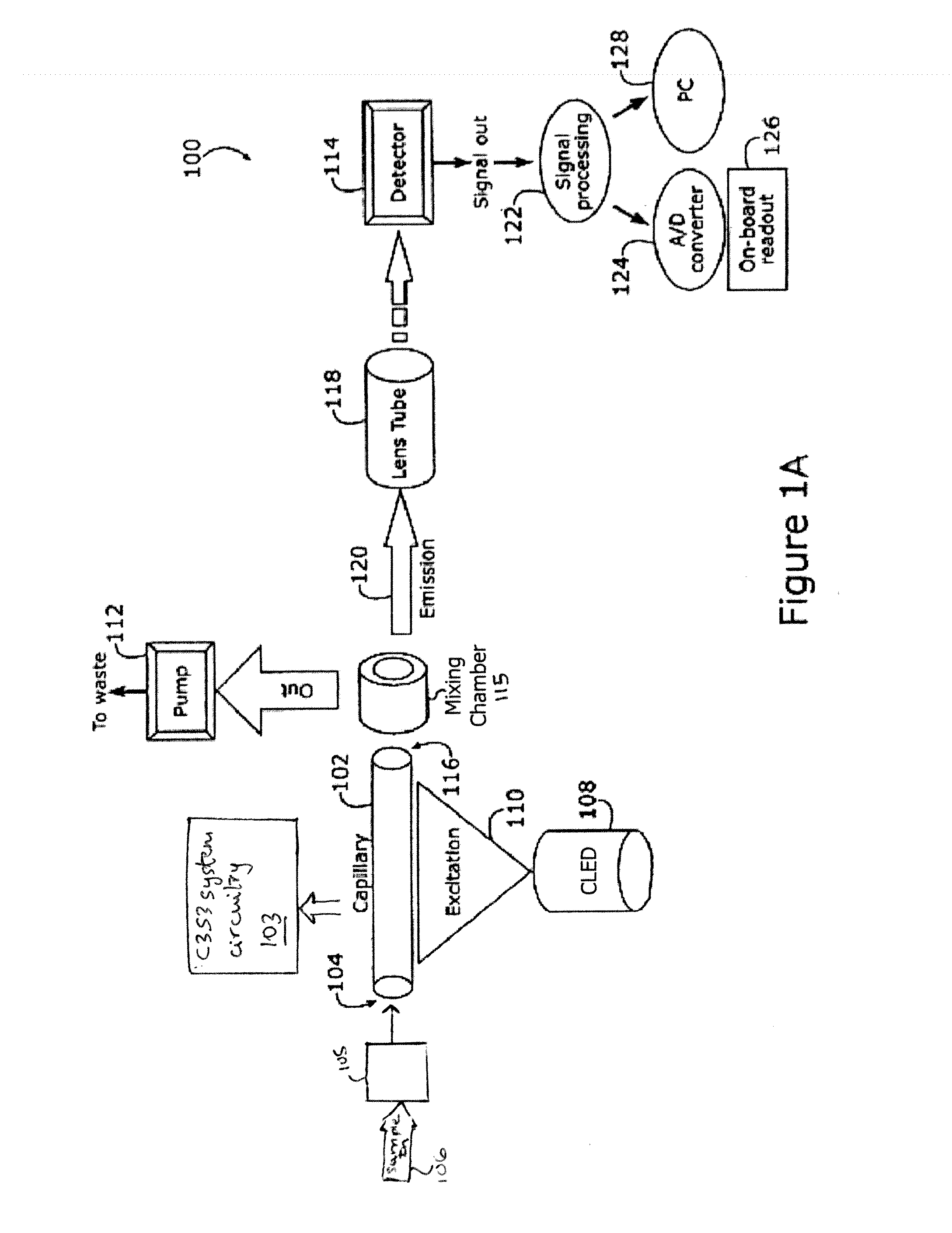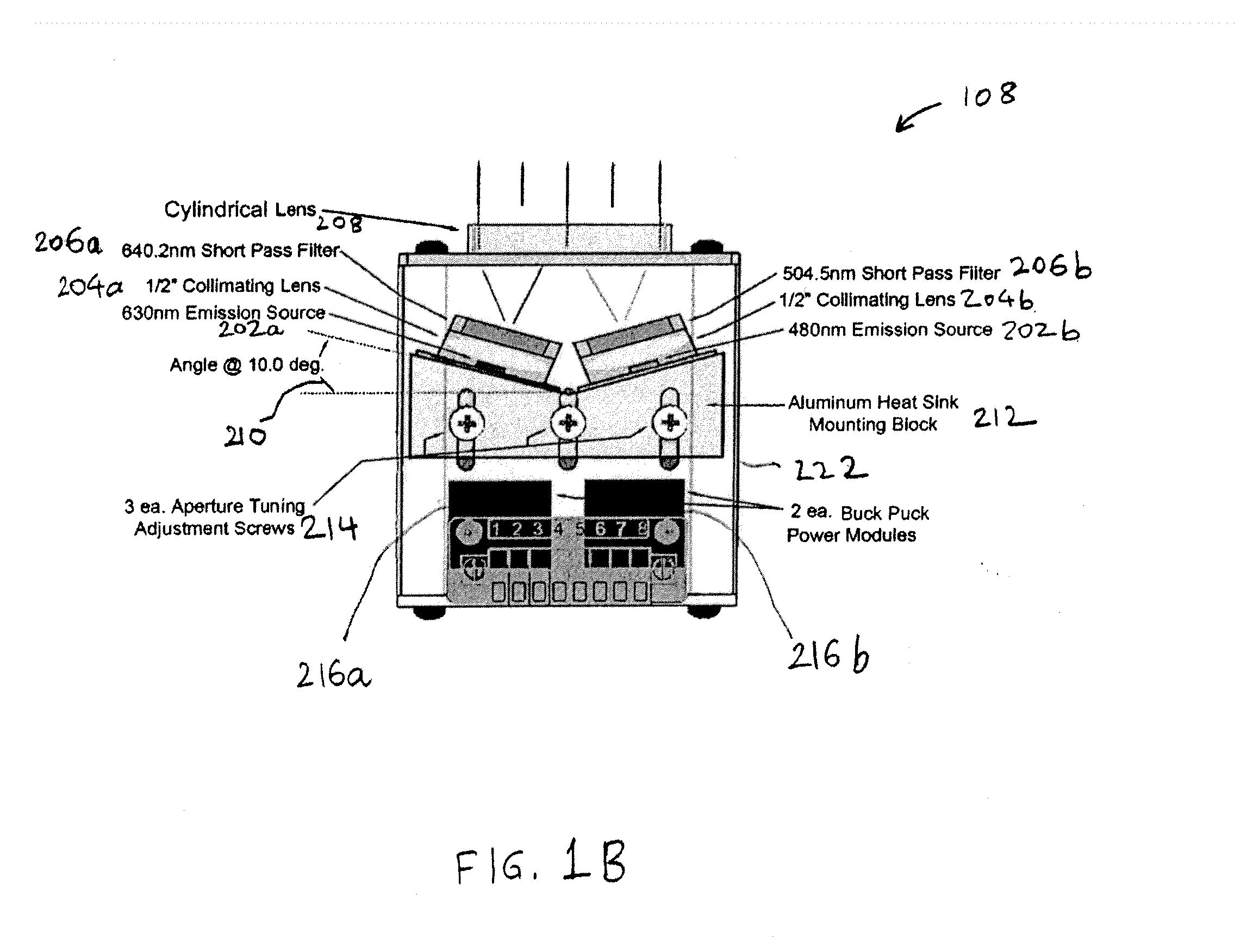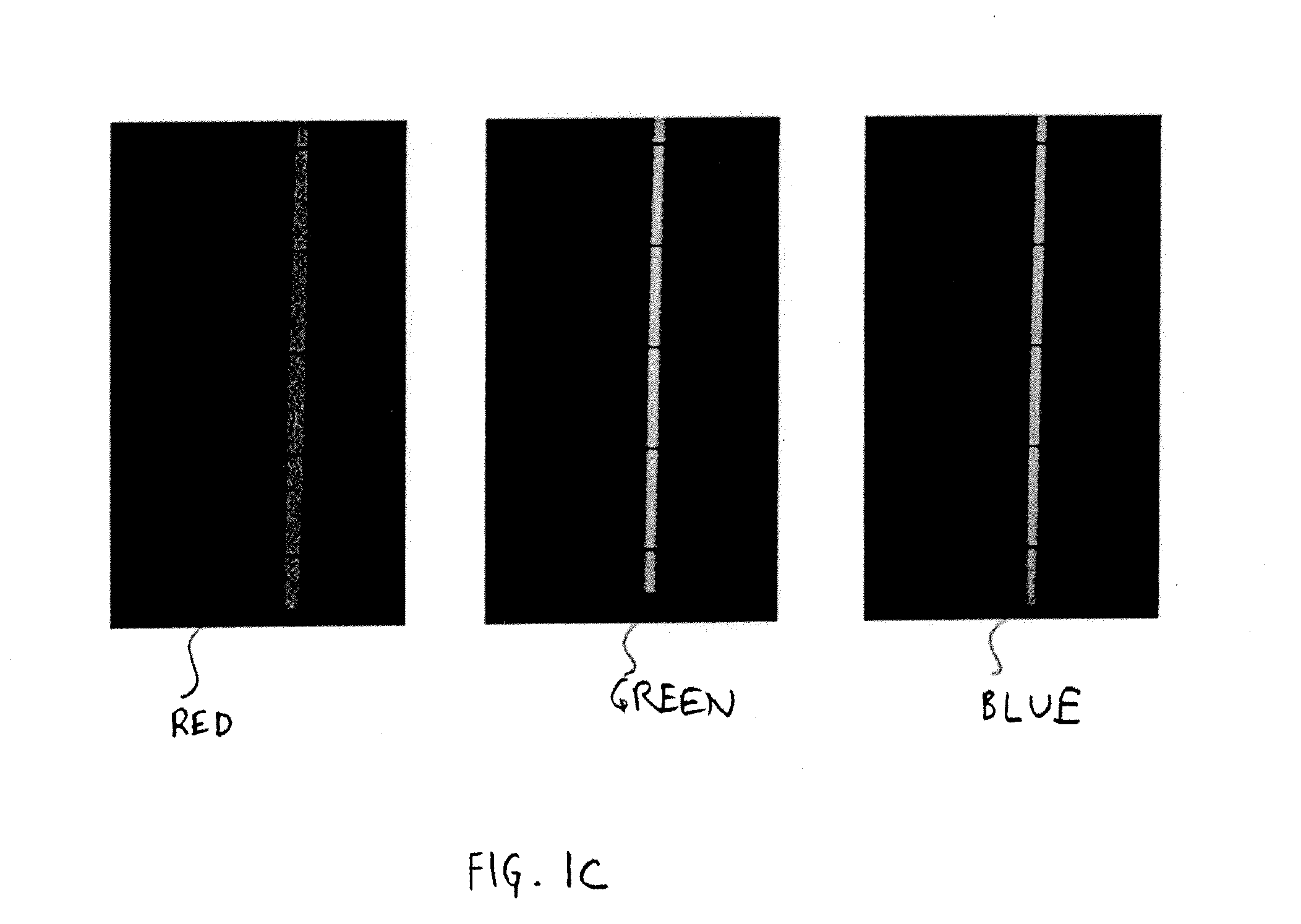Capillary biosensor system and its method of use
a biosensor and capillary technology, applied in the field of capillary biosensors, can solve problems such as obviation of issues, and achieve the effects of improving sensitivity, superior detection strategy, and low detection limi
- Summary
- Abstract
- Description
- Claims
- Application Information
AI Technical Summary
Benefits of technology
Problems solved by technology
Method used
Image
Examples
example 1
Cell Culture, Growth and Survival Application for Mammalian Cell Culture
[0129]The application of the device of the present invention to sustain the culture of IEC-6, A549 and TM-4 has been investigated. It has been found that these cell lines can be successfully cultured inside a 0.1% PDL (Poly-D-lysine) or 1 mg PDL / 10 mL sterile water coated capillary (ID=1.0 mm, OD=0.78 mm, length=38 mm). The optimum number of each cell lines in the capillary varies (typically around 7000 cells / capillary). It has also been found that A549 can survive within the capillary for at least 14 days. These results had been verified using Trypan Blue assay. It was observed that different concentrations of PDL have no direct effect on how well the cells can survive inside the capillary 102. The cell-lines used here are the adhesion type, which require attachment to a substrate in order to seed, survive, spread, and grow. Cells typically do not attach to substrates whose surfaces are uncharged or hydrophobic...
example 2
[0130]The interior of the capillary tube 102 of the present invention is coated in the following exemplary fashion:
[0131]1. Borosilicate capillary glass tubing (ID=0.78 mm, OD=1.00 mm, Length=39 mm) was autoclaved at 134° C. for 35 minutes.
[0132]2. 1 mg Poly-D-lysine hydrobromide purchased from Sigma-Aldrich was dissolved in 10 mL sterile tissue culture grade water.
[0133]3. The dissolved solution was injected into sterile capillary glass tubing by using BD Ultra-Fine Insulin Syringe (capacity: 0.5 ml, length: 12.7 mm, gauge: 30 G). The capillary was rocked gently to ensure even coating inside the capillary.
[0134]4. Capillary 102 was thoroughly rinsed after 5 minutes using sterile tissue culture grade water. The liquid residues were removed by aspiration.
[0135]5. Capillary 102 was allowed to dry overnight inside a Laminar Flow hood (Ductless PCR workstation) before introducing cells and medium.
example 3
Analysis of Cells
[0136]Capillaries are coated by adding 10 mL of sterile tissue culture grade water to 1 mg of poly-D-Lysine at pH 7.32. The resulting solution is introduced to sterile glass capillaries via ultrafine insulin syringe. The capillaries are rocked gently to promote even coating and drying. Then, the inner surfaces of the capillaries are thoroughly rinsed with sterile tissue culture grade water to remove any residue. The coated capillaries are dried overnight before introducing cells. Following successful polymer coating, the capillaries are seeded with mammalian cells to allow growth. Typically, a few cells (5-10) per capillary is equivalent to a plating density of 5000-7,000 cells per standard 96 well (0.32 cm2) tissue culture plate. Capillaries are kept within the C3S3 compartment under controlled conditions (37° C., 5% CO2) and the culture media are changed periodically until the cells reach confluence. Cell viability is then determined using any cell-permeable compo...
PUM
| Property | Measurement | Unit |
|---|---|---|
| spectral width | aaaaa | aaaaa |
| wavelengths | aaaaa | aaaaa |
| wavelengths | aaaaa | aaaaa |
Abstract
Description
Claims
Application Information
 Login to View More
Login to View More - R&D
- Intellectual Property
- Life Sciences
- Materials
- Tech Scout
- Unparalleled Data Quality
- Higher Quality Content
- 60% Fewer Hallucinations
Browse by: Latest US Patents, China's latest patents, Technical Efficacy Thesaurus, Application Domain, Technology Topic, Popular Technical Reports.
© 2025 PatSnap. All rights reserved.Legal|Privacy policy|Modern Slavery Act Transparency Statement|Sitemap|About US| Contact US: help@patsnap.com



